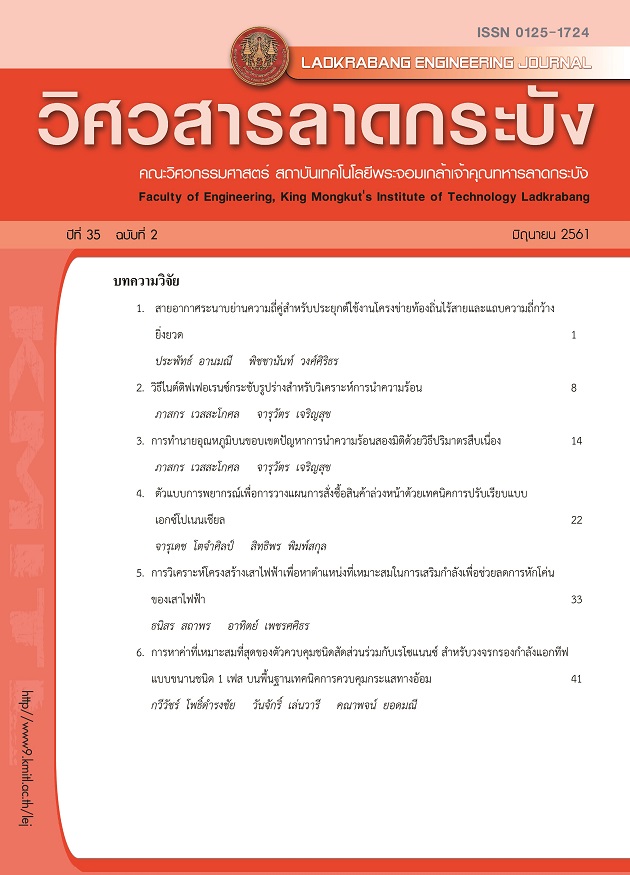An Optimization of Strengthening Position to Avoid Progressive Failure in Utility Poles.
Keywords:
Utility poles structure, Finite element methodAbstract
In the past several years, a large number of electrical poles have been failed. Most of failure caused by car crash, truck pull electrical cables or communication cables and tree fall over electrical poles and cables. As a result, affected a wide area. People suffer from lack of electricity for a long period of time and danger from electrical poles fall over and electric leakage. The study approach to prevent electrical poles failure. The study will focus on ways to reduce impact of electrical poles failure. The concepts is determine break point on electrical poles higher than ground level that can reduce force which transfer to next electrical poles. When electrical poles fall and transfer force to next electrical poles on both side. Both electrical poles are loaded and fail at fixed point by reinforcement. It will make the next electrical poles stop falling. This principle leads to simulate the electrical poles structure models by finite element method to compare analysis from finite element method and hypothesis and optimize reinforcement position.
References
B. Vivek, S. Sharma, P. Raychowdhury, S.Ray-Chaudhri, “A Study on Failure Mechanism of Self-Supported Electric Poles through Full-Scale Field Testing,” Engineering Failure Analysis, Vol.77, pp. 102–117, August, 2016.
Mehran Zeynalian, Mehrdad Zamani Khorasgani, “A Structural Performance of Concrete Poles used in Electric Power Distribution Network,” Archives of Civil and Mechanical Engineering, Vol.18, pp. 863–876, January, 2018.
King Monkut’s Institute of Technology Ladkrabang, “A Computer Program Developed for Design Utility Poles Installation,” 2557.
King Monkut’s Institute of Technology Ladkrabang, “A Study of Methods to Prevent Utility Poles from Progressive Collapse,” 2560.
Downloads
Published
How to Cite
Issue
Section
License
The published articles are copyrighted by the School of Engineering, King Mongkut's Institute of Technology Ladkrabang.
The statements contained in each article in this academic journal are the personal opinions of each author and are not related to King Mongkut's Institute of Technology Ladkrabang and other faculty members in the institute.
Responsibility for all elements of each article belongs to each author; If there are any mistakes, each author is solely responsible for his own articles.






